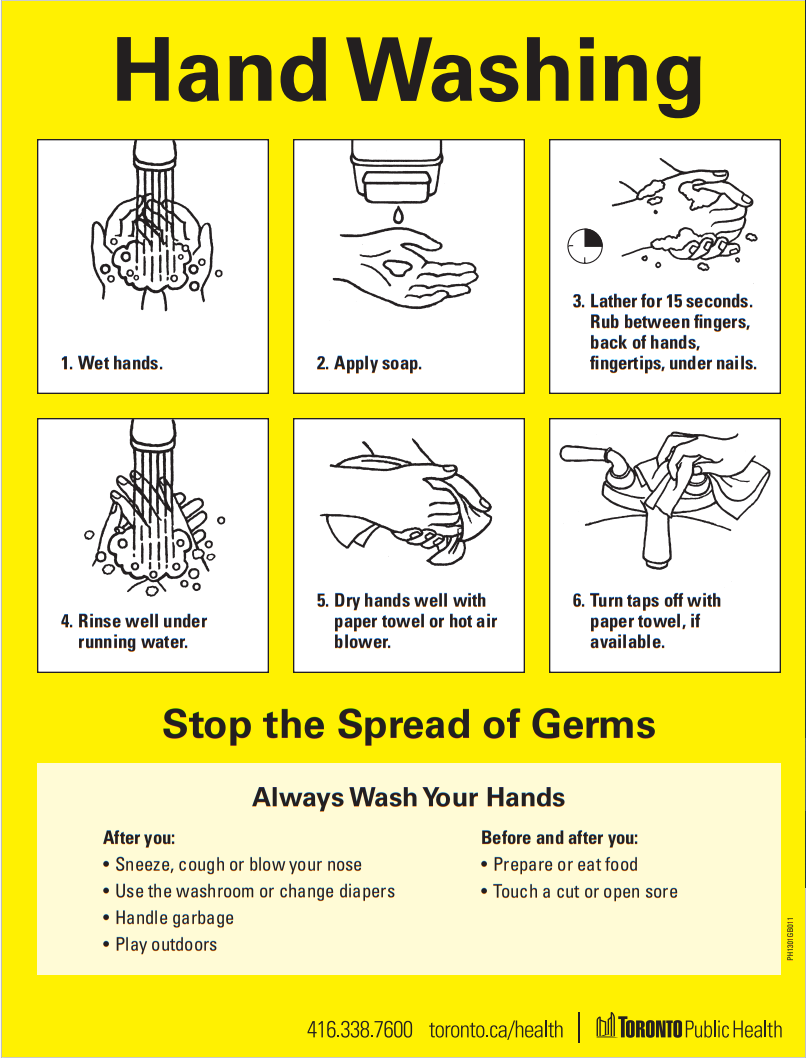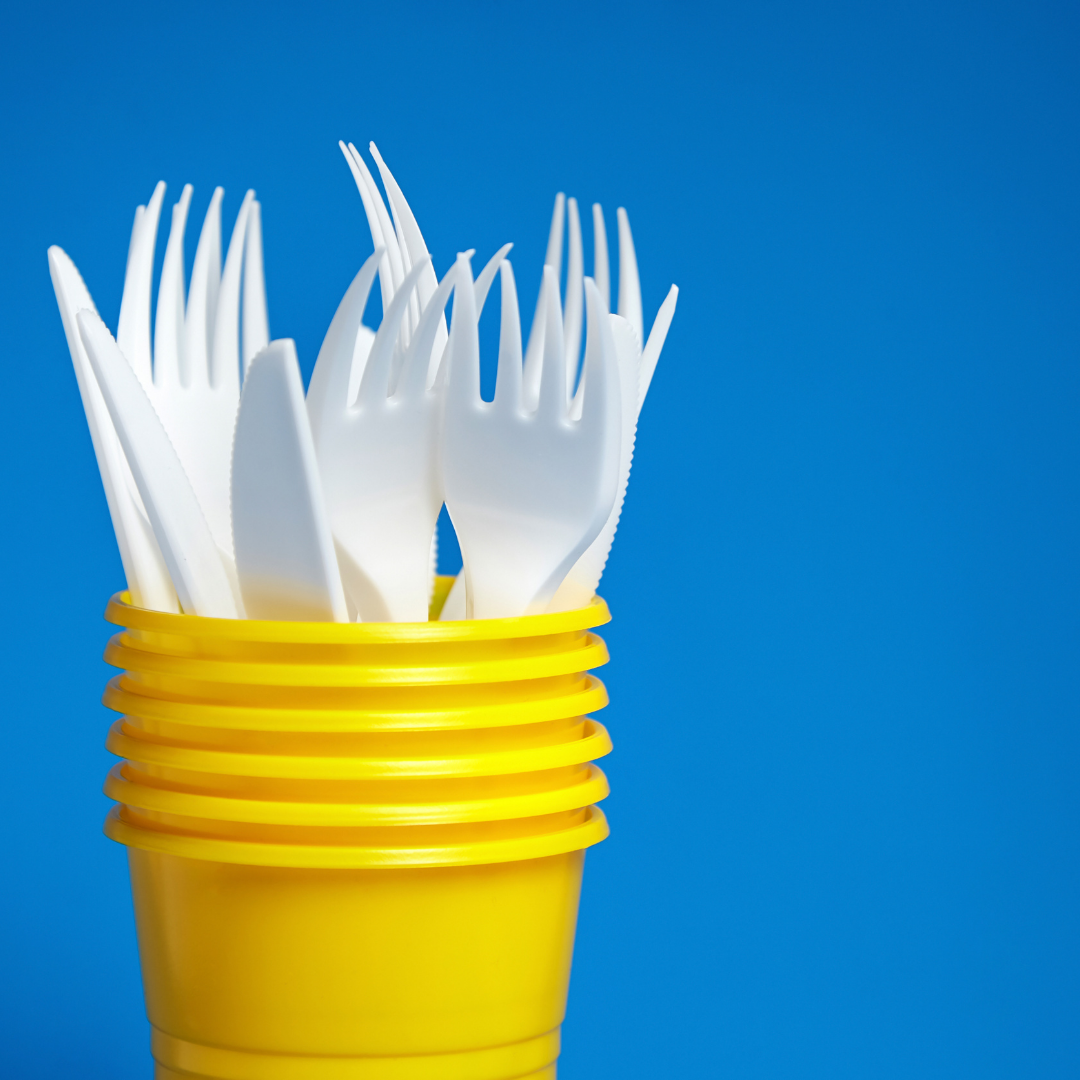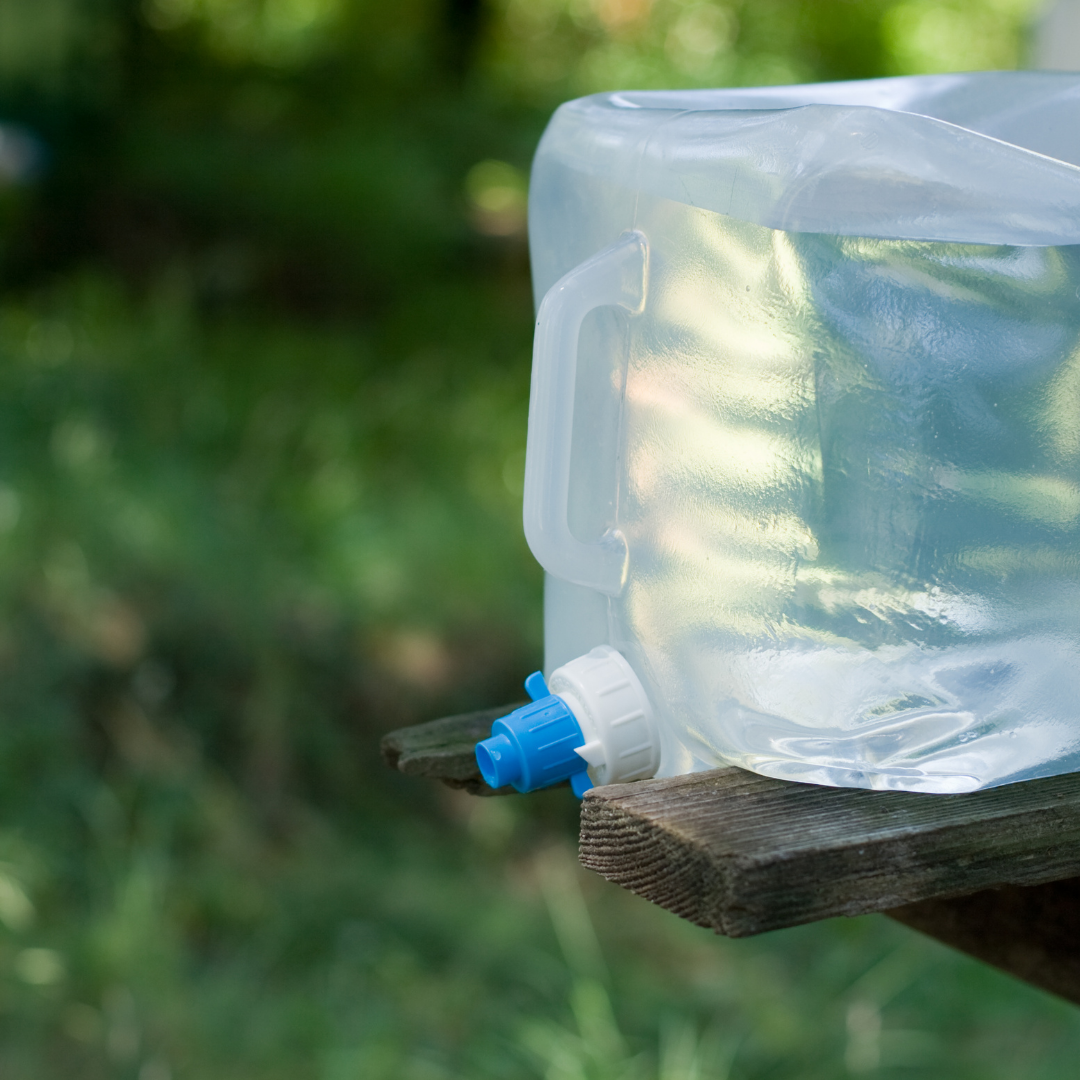Return to Policies page
The sale of food items in both indoor and outdoor common areas of the university is subject to regulations under the Ontario Health Protection and Promotion Act and City of Toronto by-laws. The guidelines outlined below are in place to ensure that events held on campus are safe, and that event organizers and attendees are protected. Please refer to the guidelines that apply to your events (e.g. barbeques, non-licensed catered events, bake sales and pot-lucks / office parties). In the event that food is not being served by a licensed food provider, a Temporary Food Services Provider Application must be completed.
Temporary Food Services Provider (TFSP) Guidelines for barbeques and non-licensed catered event.
To assist the TFSP in organizing a safe event, the following minimum requirements have been established to minimize the possibility of food borne illness.
All food must be obtained from an approved commercial source. All food must be prepared in a licensed and approved commercial kitchen. Only limited preparation (cooking and associated assembly) is permitted on site. No home prepared or home canned foods shall be used, sold or given away. The following are minimum requirements and are by no means all-inclusive.
Food Preparation and Protection

- Only final cooking is permitted at the site of the event (i.e. no cutting/chopping of ingredients, marinating, or other forms of food processing or preparation are allowed).
- All individually pre-packaged food must be served in its original container.
- All food while being stored, prepared, displayed or transported to the site must be protected against contamination from dust, insects and other sources. Provide adequate protection by covering the food entirely with a lid, plastic wrap, and aluminum foil or wrap items individually. Always provide sneeze guards.
- Containers of food must be stored at least 15 cm above the ground.
- Hazardous food must be transported, stored, and maintained at required temperatures. Cold Foods must be kept at 4 degrees Celsius or less and Hot Foods at 60 degrees Celsius or greater.
- Food probe thermometer(s) must be available to check the internal temperature of hot and cold hazardous food.
- All meats must be thoroughly cooked to an internal temperature of 74 degrees Celsius or greater. The meat should not be pink after cooking and the juices should run clear (no blood). Do not place cooked food on plates or containers that held raw foods.
- Barbeque events are not permitted to cook raw meats. All meat must be precooked and reach an internal temperature of 74 degrees Celsius or greater.
- Hot food storage facilities must be provided for hazardous foods requiring hot storage and shall be capable of continuously maintaining food temperatures at 60 degrees Celsius or greater (e.g. steam table, chafing dishes, B.B.Q., etc).
- Condiments such as mustard, ketchup, sugar, etc. shall be offered in either individual packages or dispensed from a container which protects the condiments from contamination (e.g. pump dispenser or squeeze bottle).
Food Utensils (Equipment)

- Only single service eating utensils such as plastic knives, forks, spoons, paper plates and cups shall be used. Cutlery, plates and cups shall be purchased pre-wrapped and stored in a clean container up above the ground. Cups shall be stored in their original containers and handled only from the bottom of the cup. Re-use of single service items is prohibited.
- Where a 2-compartment sink is not available for washing and sanitizing utensils (spoons, tongs, ladles, ice cream scoops) a sufficient number of wrapped, clean, back-up utensils (4 sets) must be available should the original utensils become contaminated. Utensils that fall on the ground must not be re-used.
- Food contact equipment and surfaces must be smooth, non-absorbent, easily cleaned and protected from contamination.
- Wiping cloths or sponges for cleaning and sanitizing food contact surfaces must be provided and stored in a sanitizing solution (See attached form on “How to Mix Bleach (chorine) Solution for Sanitizing”).

Water
- Potable water under pressure (gravity fed) must be provided. The supply must be adequate for hand washing, food preparation and equipment cleaning. When a sink or hand wash basin is not available a clean water container must be used (e.g. plastic jug with a spigot). All wastewater must drain into a leak-proof container/tank. Arrange for sanitary disposal of all wastewater.
- If you are hooking up to a water supply, food grade hoses must be used.

Ice
- All ice must be transported, stored and dispensed in a sanitary manner. Ice must be obtained from an approved source.
- Ice must be stored in single service closed containers or bags to prevent contamination.
- Tongs and scoops used to dispense ice must be stored a container or cup outside of the ice.
- Ice for consumption must not be touched directly with the hands.
Personal Hygiene
- Hand washing facilities must be provided at each temporary food establishment. Where a sink or hand wash basin is not available a clean container with a spigot at the bottom may be used.
- Liquid soap in a dispenser and paper towels must be provided.
- All food handlers must wash their hands with clean water and soap before starting work, after each visit to the toilet, after smoking, handling garbage, handling cash and as frequently as possible to maintain clean hands. (See attached form on “How to Wash your Hands”).
- All food handlers must wear clean outer clothing and must confine the hair by wearing hairnets, baseball caps, scarves, etc.
- Eating, drinking, and smoking are prohibited by the food handlers while working in the temporary food establishment.
.png)
Garbage
- Adequate supplies of garbage bins and recyclable stations must be provided by the TFSP.
- It is the responsibility of the TFSP to arrange for disposal of garbage and recycling at the end of the event.
General
- To protect against health hazards related to the operation of the TFSP event, additional requirements may be imposed, and University of Toronto Scarborough Food Partnerships may prohibit the sale or service of certain hazardous food(s).
- If the TFSP event does not meet the requirements of University of Toronto Scarborough Food Partnerships, it will not be allowed to occur.
- To assist in maintaining hot food temperatures at 60 degrees Celsius or greater, outdoor food events such a barbeques require a minimum external temperature of 10 degrees Celsius. The daily temperature will be verified by visiting environment Canada here
Definitions
“Employee” (This can also be a club member or volunteer) means any person who is employed in a food premise and handles or comes in contact with any utensil or with food during its preparation, processing, packaging, service, storage or transportation;
“Food” is not limited to, but includes liquids and ice intended for human consumption;
“Food contact surface” means any surface that food comes in contact with in a food premise;
“Hazardous food” means any food that is capable of supporting the growth of pathogenic organisms (organisms that are capable of causing disease) or the production of the toxins of such organisms;
“Multi-service article” means any container or eating utensil that is intended for repeated use in the service or sale of food;
“Potable water” means water that is safe for human consumption;
“Pre-packaged foods” means food that is packaged at a premise other than the premises at which it is offered for sale;
“Sanitizing” means antimicrobial treatment, and “sanitize” has a corresponding meaning;
“Single-service article” means any container or eating utensil that is to be used only once in the service or sale of food;
“Utensil” means any article or equipment used in the manufacture, processing, preparation, storage, handling, display, distribution, sale or offer for sale of food except a single-service article.
Preparing Household Bleach as a Disinfectant
(Adapted from APIC Guildline for Selection and Use of Disinfectant)
Remember the following:
- The solution must be made fresh daily to preseve strength
- The bottle must be labelled
- Clean before applying disinfectant
- Follow the contact time
- Household bleach is 5.25% sodium hypochlorite solution (50, 000ppm available chlorine)
Reference: Disinfection of Instruments & Equipment
High-level Disinfectant
High-level disinfection kills all micro-organisms (bacteria, fungi, and viruses) except bacterial spores.
When to Use:
- Use on semi-critical items
-
Use on items that come into contact with non-intact skin or mucous membranes but do not penetrate them
| Active Ingredients | 1:10 chlorine bleach solution | 1 part bleach and 9 parts water | 5,000ppm (parts per million) | ||
|---|---|---|---|---|---|
| Immersion Contact Time (Approx.) | 10 minutes | ||||
| Advantages | Inexpensive | Fast acting | |||
| Disadvantages | Extremely corrosive to metal | May destroy adhesive with prolong soaking | Solution is to be made daily | Inactive by organic material |
Intermediate-level Disinfectant
Intermediate-level disinfection kills most bacteria, fungi, viruses, and mycobacteria (tuberculodial)
When to Use:
- Use on semi-critical items
- Use on items that come into contact with non-intact skin or mucous membranes, but do not penetrate them
| Active Ingredients | 1:50 bleach solution | 1 part bleach to 49 parts water | 1,000ppm (parts per million) | ||
|---|---|---|---|---|---|
| Immersion Contact Time (Approx.) | 10 minutes | ||||
| Advantages | Inexpensive | Fast-acting | |||
| Disadvantages | Corrodes metal | May destroy adhesive with prolonged soaking | Solution is to be made daily | Inactive by organic materials |
Low-level Disinfectant
Low-level disinfection kills some viruses, bacteria and fungi
When to Use:
- Use on non-critical items
- Use on items that contact intact skin and not mucous membranes, or items that do not ordinarily touch the client
- May be used for routine housekeeping
| Active Ingredients | 1:500 bleach solution | 1 part bleach to 499 parts water | 100ppm (parts per million) | ||
|---|---|---|---|---|---|
| Immersion Contact Time (Approx.) | 10 minutes | ||||
| Advantages | Inexpensive | Fast-acting | |||
| Disadvantages | Corrodes metal | May destroy adhesive with prolonged soaking | Solution is to be made daily |
Return to Policies page